NOW A MAJOR MOTION PICTURE—The #1 New York Times bestselling worldwide sensation with more than 18 million copies sold, hailed by The New York Times Book Review as “a painfully beautiful first novel that is at once a murder mystery, a coming-of-age narrative and a celebration of nature.” For years, rumors of the “Marsh Girl” have haunted Barkley Cove, a quiet town on the North Carolina coast. So in late 1969, when handsome Chase Andrews is found dead, the locals immediately suspect Kya Clark, the so-called Marsh Girl. But Kya is not what they say. Sensitive and intelligent, she has survived for years alone in the marsh that she calls home, finding friends in the gulls and lessons in the sand. Then the time comes when she yearns to be touched and loved. When two young men from town become intrigued by her wild beauty, Kya opens herself to a new life—until the unthinkable happens. Where the Crawdads Sing is at once an exquisite ode to the natural world, a heartbreaking coming-of-age story, and a surprising tale of possible murder. Owens reminds us that we are forever shaped by the children we once were, and that we are all subject to the beautiful and violent secrets that nature keeps.
Sale end in:
Where the Crawdads Sing
By: Delia Owens
ISBN-10: 0735219109
ISBN-13 : 978-0735219106
Publisher : G.P. Putnam’s Sons; Standard Edition (March 30, 2021)
Language : English
Paperback: 400 pages
Reading Age : None
Dimensions : 5.45 x 0.82 x 8.15 inches
Item Weight : 11.2 ounces
$17.77 $14.22

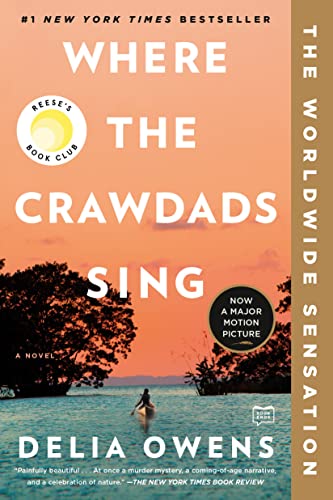


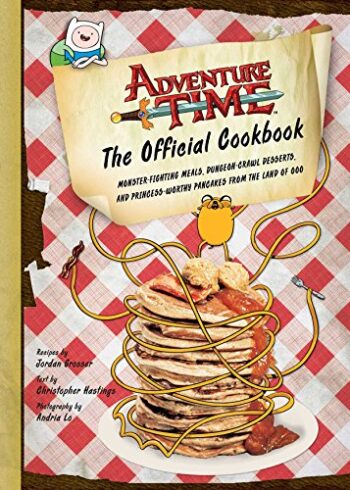








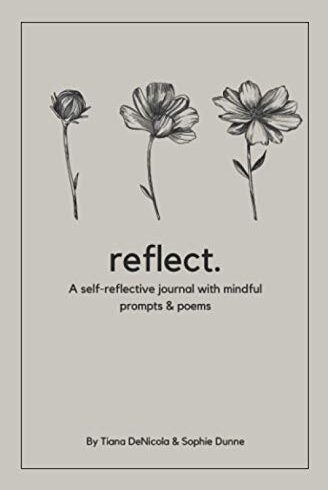

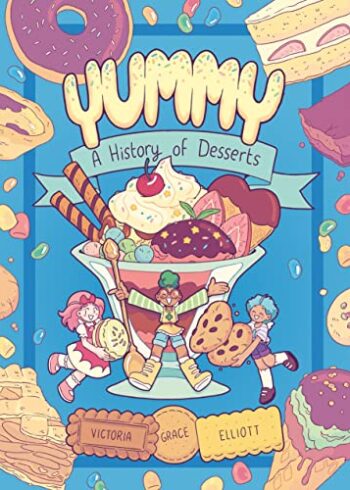
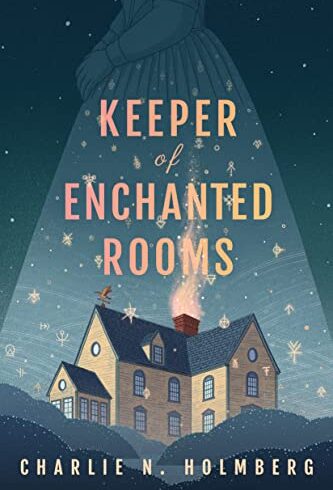
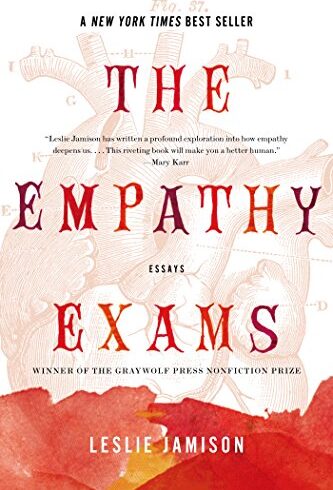


Jim Muccio –
I just finished reading (and crying through) the first novel by naturalist Delia Owens entitled, “Where the Crawdads Sing”. She has achieved a literary feat uncommon to naturalists, let alone novelists. 67 weeks at the top? Her readers are not wrong. But first, let’s talk about crawdads…, Do they sing? No. They are tiny freshwater lobsters that live underwater. They only sing, as do Maine, and rock lobsters, when you put them in a pot of boiling water and the steam expands through their exoskeleton. So no, they do not sing, nor do they do anything else that can remotely be depicted as human. However, the phrase, “Where the crawdads, sing”, is fully defined by Owens thus cannot be confused in her novel The reference to their presumed music as defined by Owens is one of her many uses of a colloquialism. She spells it out using the complete phrase, “ Way out yonder where the crawdads sing”. More context for the less colloquial is that the full phrase means in the middle of nowhere. Which is exactly where the story takes place. In the middle of nowhere. It takes place in a marsh (not a swamp, there’s a difference) along some stretch of coast on the eastern seaboard of the United States. The exact location doesn’t exist. It’s fictional. Owens includes a map, which I referenced frequently. Mind you, this is no Narnia, this is no Middle Earth, but this is as real a place, even more real, than any presumed backdrop for any other great novel. West Egg for instance. Just like West Egg on the north shore of Long Island, this marsh on the eastern shore of North Carolina cannot be found on any map, nevertheless, it’s a place I would like to visit., The phrase, thus, refers to being beyond the most remote area of the wild as possible. Off the map, off the grid. Way out yonder where the crawdads sing. A place, very different from, and as remote as, any place in Africa where Owens spent much of her professional life as a naturalist. Beyond anything we know, the marsh she created is truly in the middle of nowhere. It is here where the main character, Kya, finds herself alone. She has been left alone by family and most of humanity. We are witness to the abandonment. As a little girl she is forced to live on her own and survive in the wild. Shades of Jody Foster from the movie Nell…except she speaks English and she has a lot more food to eat. That is, if you like seafood. Mussels and smoked fish, and whatever sprouts from a shabby wild vegetable garden. She was not raised by wolves, or gorillas, but instead by the marsh itself. And a lot of seagulls and other sea birds. The marsh is her mother. Most of us couldn’t fathom the life of Kya–essentially on her own since age seven. Think about that for a moment…if you don’t cry…you should. I cried three times in the first 125 pages of the story. I cried 4 or 5 more times before the end of the story., This book, I presume since Owens is well read having spent a lot of time on her own, crosses many genres. Her naturalist side shines through as the wild is on display on every page. Yet her story is a murder mystery since the body of Chase Andrews is found dead in the marsh in the prologue. She uses poetry frequently. Her own poetry, which is quite good. And of course, it is a love story of deep dimension. Difficult–to say the least–because finding love in the middle of nowhere is not easy. Unless you find it within yourself. One can’t say it’s a coming of age story, since the novel spans all of Kya’s lifetime…but yes…a Marsh Girl can come of age…and have it all. And of course there is the courtroom scene related to the murder. Pick an author, Grisham, perhaps. We shall see when Hollywood releases their version in a few months how Owens dialogue holds up to Perry Mason. Will the courtroom dialogue be credible? Despite Kya’s profound literacy, which you will discover on her journey, Kya doesn’t pull a Lisbeth Salander (Stieg Larsson) and turn the tables on the court. She’s more humble, crippled outside her marsh, withdrawn from the process, meditating, and mostly concerned with the cat who lives in the court house. If you are rooting for her, as I was, prepare for another bout of tears., The book is a page turner because this story jumps from the pages and comes alive in your mind. Kya is real. She is alive. She will now exist in literature just as Captain Ahab and his whale. Kya and her Marsh. Owens brought her to life through her thoughts, her paintings, her poetry, and her music. Perhaps the best apologetic for an absent family, Owens walks through the conditions that must have been present for those responsible for her abandonment to receive forgiveness. As well as those who cared, but not enough, to keep her isolated. The reckoning, in the courtroom, was perhaps insufficient. Justice could never be served for the rising fear and prejudice visited upon this young girl by a town full of ignorant people. Yet some did rise above, in their own way, and Kya understood. It’s her understanding of human nature, through the eyes of our own evolution that shows us that we are not too far removed from the animal kingdom. There but for the grace of God…not into the fires of hell but rather into the bountiful Garden of Eden–the Marsh. The sins of the animal kingdom cannot be judged as sins–as when an injured mother fox leaves her kits in order to survive to another day where perhaps she may rear another litter when survival is more certain. Can the momma fox be judged?, This is perhaps Owen’s legacy. Crawdads don’t sing–a fiction at best and anthropomorphism at worst. She knows it. Animals do not take on human characteristics. Only the truly ignorant would believe things move in that direction. Fake naturalists such as Elizabeth Marshall Thomas (The Hidden Life of Dogs) springs to mind as the purveyor of such garbage. Rather we can now look to Owens as the author of something as profound and insightful as from the true greats like Henry David Thoreau who wrote, “In wildness is the preservation of the world”. Here is where Owens lives. Here is where Owens sings. Her voice a whisper above the din but a true voice calling out in the wilderness to be heard above the wind through the palmetto trees or the waves crashing on the sand leading into the marsh. To the gulls who circle above the beach and are friends with Kya as she sleeps. To the other wildlife that saunter by her without pause. She is one of them, not the other way around. Justice, therefore, is a natural one and subscribes to nature’s law. Balance in this natural world can always be restored. This is the true beauty of Owens’ novel and no doubt the key to her success. Five-Stars for Owen’s first novel and this literary feat. A must read for everyone who claims they read books. Kya will stay with me, and you, forever…
David W. Johnson –
What I liked most about this book is the depictions of believably real (though fictional) characters challenged by real-life issues, with the characters’ basic motivations well described and integrated into a story of how the characters succeed or fail against their challenges, and why. I believe the philosophical term for literature of this kind is “metaphysical values.”, (I haven’t seen the movie so far but probably will see it eventually. Meanwhile, the various trailers that I’ve seen seem to indicate that the novel’s main spirit may have been badly mangled in the movie, possibly to emphasize issues such as racial prejudice and other forms of bias against those who are “different,” and other contemporary concerns. From various critical reviews on this website, it also appears that the story itself may have greatly misrepresented what North Carolina was actually like in the 1950s, 60s, and 70s. But I don’t see geographical or historical accuracy as necessarily essential to a fictional story concretizing important metaphysical values.), At the end of the novel, in the Q&A with the author (pp. 376-377), there is a very concise description of what the book is about. The story follows the life of a young girl named “Kya” living mostly alone in fictional marshlands in North Carolina from age 6 to her death from natural causes (unexpected heart failure) at age 64. It’s a story of how she survives with minimal help from anyone else. A child of 6 wouldn’t have been able to survive alone for long without significant knowledge and experience gained from interaction with other humans, and she did receive minimal interaction with her mother, brother, father, brother’s friend Tate (later Kya’s first lover and eventual husband after a fateful 2nd love with Chase Andrews), and a married (black) couple in the nearby fictional town of Barkley Cove. Tate and Chase both disappoint Kya deeply, Chase so strongly that Kya becomes the prime suspect when Chase is found dead, apparently murdered. (Chase lied to her about potentially marrying her, and he even tried to rape her, causing her to fear that Chase would keep trying again and again by force.) Before Tate leaves her while he goes to college, she learns to read with Tate’s help. He also gives her many old books to read, mostly on life science. She apparently never receives access to any books in literature, history, philosophy, or other general humanities subjects. She remains forever shy and defensive toward most other people despite becoming highly adept at studying the wild animals and plants in the marsh, writing books of her own on her observations, becoming successful as a published author, and painting vivid sketches of what she observed. Along the way, she also learns to count beyond 29 and to count money and make change, again with help from Tate and others., At her trial for the murder of Chase, the prosecution presents serious evidence against her, but the evidence isn’t quite strong enough to obtain a guilty verdict from the jury (beyond reasonable doubt). She has an especially good alibi, although it has weaknesses that leave room to doubt her innocence. Since there are also reasonable doubts about her guilt, the jury verdict is “not guilty.” One key piece of evidence, a “shell necklace,” remains missing until the very last page of the story, shortly after Kya’s death, when Tate (whom she had married by then) finds it. For those who want to be surprised, I won’t say more about the details of the ending. Kya certainly would have had to be incredibly resourceful and daring, perhaps far larger than real life, to have been able to construct such a convincing alibi, if she actually was the murderer. The symbolic parallel to the mating rituals of fireflies provides a strong hint about Kya’s mental state., The events of the story are mainly just the backdrop. The story’s main focus is on how Kya felt and how she learned so much about nature and life sciences from her own direct observations and from books that she read, without ever attending school at any level for more than one deeply unpleasant day at age 6. Despite how little she learned about humanities subjects and how to deal with other people, the story depicts her as focused on the reality that she was exposed to, and on how she used her natural intellectual capacity to make sense of it as best she could. She certainly functioned on a reality-is-real premise, though without explicitly identifying that premise or comprehending its higher implications for human living; she also felt her emotions without any explicit appeal to any greater mysticism or other-worldly perspective. (Kya shows no superstitiousness or religious worship of natural phenomena.) But the story doesn’t attempt to delve further than that into issues of values, why man needs them, and how best to choose and pursue one’s values. With access to books, Kya surely would have had the opportunity to do such deeper reading in real life, even if she remained otherwise isolated from most other people throughout her life. She had Tate, along with the two adult townspeople, her publisher, and to some extent her brother Jodie — all of whom provided emotional support to her during her trial. She is a heroine of sorts, though a severely stunted and crippled one, especially emotionally toward others., The author describes the story as “primarily about self-reliance, survival and how isolation affects human behavior. Since our species is a social mammal, we have strong genetic tendencies to belong to a group of tightly bonded family and friends.” (P. 376.) What “genetic tendencies” does this refer to? How much personal choice do humans have? Man has a non-automatic rational faculty on which he needs to depend for his survival. But he also needs a lot of help from others, especially family, along the way as he proceeds from the stage of a newborn infant to adult life. Without such help in childhood, the stunted growth that may hinder a child’s development and readiness for adult living should not be surprising. A more heroic kind of story might explore more fully how much more a person can learn about life from books, and how events might unfold as such a person strives to apply such learnings in practice. Kya certainly makes a valiant and largely successful effort, which, for me, makes Crawdads excellent as far as it goes.